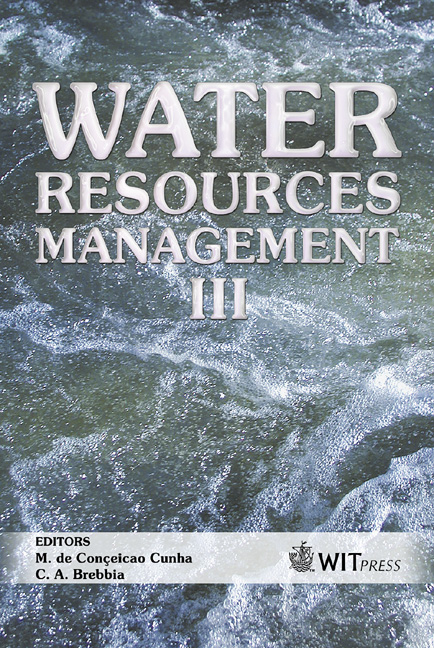Modelling Depth-integrated Pollution Dispersion In The Gulf Of Thermaikos Using A Lagrangian Particle Technique
Price
Free (open access)
Transaction
Volume
80
Pages
12
Published
2005
Size
1,006 kb
Paper DOI
10.2495/WRM050181
Copyright
WIT Press
Author(s)
R. W. Barber & N. P. Volakos
Abstract
A two-dimensional Lagrangian particle technique is described for simulating depth-integrated contaminant dispersion in well-mixed estuaries and coastal seas. The governing advection-diffusion equation is first rearranged into a Fokker- Planck expression, allowing the implementation of a consistent random-walk method for simulating spatially variable diffusion. The paper then describes a novel particle-tracking algorithm that can be used with arbitrary non-orthogonal boundary-fitted coordinate systems. The Lagrangian particle approach is perfectly conservative and completely free from numerical diffusion. In addition, this method is able to preserve steep concentration fronts allowing accurate modelling of point sources of pollution. The capabilities of the numerical model are demonstrated by simulating wind-induced circulation and pollutant transport within the Gulf of Thermaikos, a semi-enclosed bay close to the City of Thessaloniki in northern Greece. Keywords: coastal pollution, point source, Lagrangian tracking, advectiondiffusion equation, Fokker-Planck equation, non-orthogonal, boundary-fitted. 1 Introduction Increasing environmental awareness and the need to predict and improve the water quality in estuaries and coastal seas has led to significant developments in the mathematical modelling of water pollution [1,2,3]. To date, the most popular methods for predicting the transport of coastal pollution are based on Eulerian solutions of the standard advection-diffusion equation using either finite-
Keywords
coastal pollution, point source, Lagrangian tracking, advectiondiffusion equation, Fokker-Planck equation, non-orthogonal, boundary-fitted.





